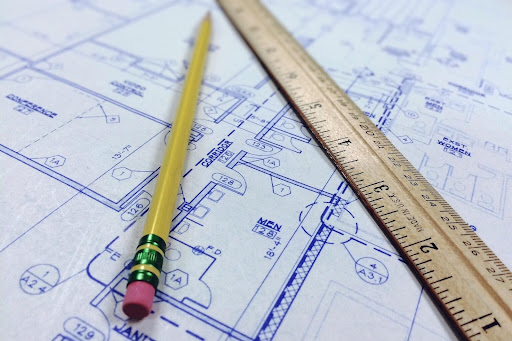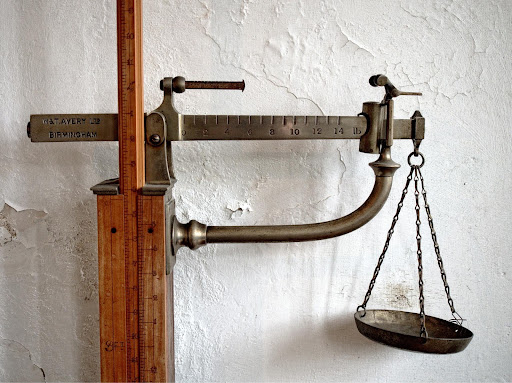Measurement can be described as the length, content, or even the size of anything being measured. A long time ago, a universal measuring system existed in the 18th century when a system was put in place.
Before the state of the 18th century, nations such as France implemented varied measuring systems across many professions. Just in France alone, there were over seven measuring metrics in place.
Human morphology provided names for many of the units of measurement. For those unfamiliar with human morphology, it includes the pace, hand, and foot, among others. While these units were reliable at the time, they needed to be standardized.
As the world began to evolve into a global village with uptake in trade, it became necessary to have a standardized system. This would create a balanced environment for trade to take place. Before we delve further into the history of quantifications, here are some of the most widely used and important measurements across industries.

Length
This is the most applied measurement in human history. Examples of this measurement include the yard, the inch, the mile, and the yard. Determining length was important as far as land surveying was concerned, as it allowed people to price and partition land accordingly.
To create a standard of length measurement, bars and rods were placed in public places to measure the unit. Such a measurement tool would then be used as a standard and circulated throughout the community.
A good example would be Mesopotamia and Egypt, where rods were stored in temples. The units of measurement were called cubits, and they were derived from the king's dimensions.
Weight
Weight is more complex to measure than length. However, the ingenuity of humans has overcome this challenge. As it turns out, the grains of wheat have an even size. This makes it possible to measure the weight of the grains of wheat. Jewelers are still applying this technique to date. Just like length, chunks of metal were placed in public space to represent the standardized weight of a selected amount of grain.
This system, however, has drawbacks as metal can be taken from the scale resulting in an inaccurate reading. Despite this risk of being scammed, weights and the accompanying scales are still crucial when accurately measuring weight.
Volume
For people who work with money, such as traders and tax collectors, volume is a critical measurement. However, the volume is also quite tricky to measure. Attempts to standardize the measurement, such as creating the same sized baskets and pots, are effective, but the exact measurement tends to vary still even when the containers appear to have the same properties. Weight is a more accurate measurement whenever you need accuracy.
Time
Time is an example of an abstract measurement. This is because you cannot see time but perceive it through instruments. In our modern lives, we structure our days around time. For example, time dictates when we take our meals, when we go to work, etc.
Throughout history, we have experienced time through the days of the week. The calendar even allows us to figure out the length of time in a given year. Before modern technology, our ancestors could tell the time by tracking the sun across the sky.
When the sun rose, everyone knew it was morning; at the sky's peak, it was noon, and so on. It was impossible to partition time into seconds, minutes, and hours at that time as they were irrelevant.
As you can see from the examples cited above, standards allow technology to operate efficiently by building trust Standards:
-
Give a common language that allows us to measure and grade performance.
-
Make it possible for components manufactured by different companies to work together.
-
Provides market equity, therefore, protecting the consumer.
Why measure in the first place?
Each one of us makes quantifications daily. Just think about how much you glance at the time during your day-to-day activities or your speedometer as you drive. Our lives revolve around these and many other quantifications to create a sense of order; luckily, some measuring devices are accurate.
For example, the cheapest digital watch can accurately measure the time within a couple of seconds in a given year. Other quantifications, such as the thermometer on your oven, can be off by a wide margin. This is fine when all you are doing is cooking food because you can be more accurate. This is important to note as not all quantifications are created equal; some need more accuracy than others.
Modern life is pegged on hidden quantifications. For example, the exact dimensions and electrical characteristics of the parts that make up your computer are not of concern to you. While this is so, these small characteristics are what determine whether your laptop works or not.
Henry Ford was the pioneer who advocated for standardized parts. This standardization is important today as separate companies make most of the components manufacturers use. This makes it important that all the subcontractors operate within the specified dimensions and all other important parameters to develop a component that works with other parts. With this system in place, many devices would function.
While Ford was the first to apply standardization in his automobile industry, the idea had a more sinister origin. Around 1778, Honore Blanc started making guns that had interchangeable parts.
What do we measure?
For a long period, leading countries such as Britain used units based on everyday things such as the feet. This metric would be very effective if everyone had the same size of feet, but this is different.
Therefore, a foot of a certain length had to be adopted as the standard, the same being applied to all other units. The bone of contention with this system is that other countries also adopted similar units, but they were quite different. This led to confusion as traders from different regions tried to engage in business. For example, the gallon as a unit of measurement is different between the US and Britain. The British gallon is larger by a fifth compared to the US gallon.
It is also an inconvenience to try and convert between the different units, much less to force one party to drop their system and adopt the other party's system. It, therefore, became critical that the USA and Britain try to harmonize their units to facilitate trade. As a result, major players decided to adopt the primary system of units, dubbed the Systems of Units or SI in short.
Metrological Definitions
-
Scientific metrology. This refers to the science of measurement, such as the development and application of measurement standards.
-
Industrial metrology. This is whereby measurement science is applied to manufacturing.
-
Legal metrology. This is any measurement activity aiming to ensure fair trade and protect the consumer.
What does the term measurement mean?
The basic idea is a quantitative comparison, which is done using one or many instruments. Therefore, to measure a table's length, you may compare it with a tape measure with marked units such as centimeters.

Measurement Throughout History
Human beings have been measuring since they started purchasing and owning things, since the dawn of civilization itself. What's more, the aspects that make our civilization successful such as science, would not be possible without measurement.
Throughout history, measurement and science have worked together to produce technological advancements. The growth of trade also led to the harmonization of measurement systems. While this history of development is long, here are some of the notable highlights:
3000 BC, Egypt
The cubit, the length of the king's forearm plus the width of his palm, was used. This measurement was made and carved into a block of granite from which wood and stone replicas were made and distributed to the general public and builders. The architects were tasked with checking them during every full moon, and a penalty was put in place if they failed.
1196 AD, England
This was when the initial push for the standardization of units was made in England. This was done in Assize of measures. This mainly aimed to ensure that wine and beer were accurately measured.
1215, England
Magna Carta declares that there will be a uniform system to measure ale, wine, corn, and weights.
1612, Italy
The thermometer was invented, and it is speculated that Giovanni Francesco Sagredo was the inventor.
1643, Italy
Evangelista Torricelli invented the barometer
1657, Netherlands
This was when the pendulum clock received its patent, and the first one was made soon after. The clock is accurate to within 10 seconds daily, a groundbreaking improvement from the six-minute 'accuracy' of former mechanical clocks.
January 1762, Jamaica
William Harrison gets off a ship with a unique watch, a type of chronometer called the H4. His father, John Harris, designed the watch to keep time while at sea. Despite being onboard the ship for an extended time, the H4 was only 5.1 seconds slow, a major development for a mechanical device.
1791, Paris
The French National Assembly came to a consensus to standardize the unit of a meter based on the earth's circumference. As no one accurately knows this distance, expeditions were sent out to find out. However, France determines its official standard before they get all the results, resulting in a shorter measurement by about a fifth of a millimeter.
1799 Paris
The metric system is implemented via the adoption of platinum/iridium alloys representing a meter length and a kilogram mass.
1824, France
An action of parliament brings forth a better and more popular measuring system, and a standard yard is established. The yard is stored in the Houses of Parliament for safety (but it ends up burning up in an 1834 fire). Following this tragic event, a new standard yard is made, stored in a fireproof box, and bricked up in a wall within the newly constructed House of Commons. In addition, the yard is taken out every 20 years to confirm the lengths of the standard measurement.
London, 1842
The Excise Laboratory is set up in London to conduct chemical analysis to figure out the contamination of tobacco. The lab became known as the Laboratory of the Government Chemist and officially held the position of the oldest chemical laboratory in Britain.
Paris, 1875
Seventeen nations came to a consensus and signed the Convention of the Metre. The International Bureau of Weights and Measures is set up in the same year.
USA, 1960
Theodore Maiman (1927-2007) comes up with the first working laser in California. Although it was a discovery made as they searched for an application, measuring length, time, and luminous intensity quickly became critical.
1960
The International System of Units(SI System) is put in place.
1971
A new unit, the amount of substance, is included in the SI base units, becoming the seventh.

Conclusion
Unified measuring systems have served to unite mankind. It allows us to reasonably trade among ourselves, navigate large water bodies among much more. Of course, we must remember to mention one of the most important measurements, time.
Our need to measure our outside world has allowed us to make tools that have made our lives easier. As technology advances, you can expect man to continue developing more complex and innovative measurements.






